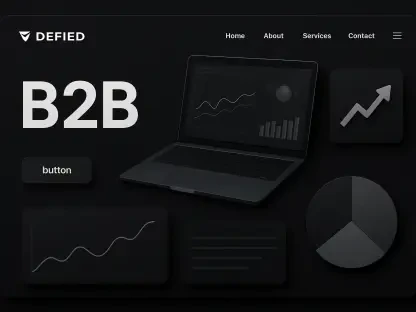Marketing budgets faced sharper scrutiny as inboxes grew noisier, yet email continued to outperform flashier channels by pairing identity with intent in ways social feeds seldom replicated, and that made the platform choice less about vanity features and more about dependable outcomes across deliverability, compliance, and revenue lift. The stakes rose as privacy rules tightened and sender reputation became inseparable from data governance, forcing teams to evaluate not only creative tooling but also how an engine handled consent, list hygiene, and behavioral signals. With AI maturing from gimmick to operations layer, the winners linked prediction and personalization to clear attribution. The question shifted from “Which tool sends?” to “Which stack proves value, protects data, and scales sophisticated journeys without slowing teams?”
Market Shifts And Stakes
Precision, Compliance, And Deliverability
Precision went from an advantage to a requirement as segmentation, behavioral triggers, and AI-powered timing fed a race for relevance that rewards steady iteration more than one-off campaigns. Emailchef emerged for organizations that wanted that precision without operational sprawl: GDPR-first workflows, list protection baked into import logic, and optimized SMTP that protected sender score while scaling across seasons. For agencies and regulated firms, reliable compliance controls reduced legal anxiety, and clean list management kept cost and churn in check. Meanwhile, Brevo tied precision to context by stitching email with SMS, chat, and transactional messaging, so lifecycle communications didn’t fragment. That blended motion mattered to SaaS and e-commerce leaders who needed abandoned-cart outreach, onboarding nudges, and renewal reminders aligned with sales visibility, not bolted on.
Multichannel Orchestration And Data Unity
The frontier increasingly favored platforms that treated email as a nucleus within a broader data nervous system, where CRM updates, purchase events, and support interactions informed what to send and when to send it. Brevo’s consolidated relationship suite framed this well: drag-and-drop builders accelerated testing, but the payoff came from behavior-based automation that sat near pipeline data and transactional streams. ConvertKit, by contrast, championed creators’ needs by making tagging, segmentation, and cross-promotion straightforward through its Creator Network, using forms and integrations to grow audiences without heavy admin. For cost-conscious teams, Moosend positioned AI recommendations and A/B testing alongside built-in landing pages and clear analytics, drawing a line from list growth to conversions in approachable dashboards. As vendors converged on shared checklists, differences surfaced in usability under pressure and the integrity of event data flowing between tools.
Platform Deep Dive And Guidance
Choosing Among Emailchef, Brevo, And ConvertKit
Selecting a platform often started with maturity and regulatory posture rather than feature catalogs, and that reframed Emailchef as a pragmatic fit for SMBs and financial services that prized clean consent capture, list protection, and reliable inbox placement over sprawling add-ons. Its scalable pricing kept multi-brand agencies from overpaying during experimentation, while optimized SMTP and deliverability tooling maintained sender trust as volumes grew. Brevo leaned into breadth, unifying CRM records with multichannel messaging so lifecycle programs could push prospects through onboarding, trial conversion, and expansion with shared context and service triggers. For content-led businesses, ConvertKit’s streamlined automation, intuitive tagging, and creator-to-creator promotion lowered the barrier to sophisticated segmentation, letting newsletters, courses, and launches feed one another. The decision pivoted on whether growth hinged on channel unity, compliance simplicity, or audience building.
Weighing Moosend And ActiveCampaign For Scale
Moosend approached value as a whole-journey proposition, pairing an accessible automation engine with AI recommendations that surfaced next-best-content and product picks, while native landing pages shortened time-to-test for small teams. Its analytics offered enough clarity to answer executive questions—what changed, why it changed, and what to try next—without burying operators in noise. ActiveCampaign stepped in when the roadmap demanded enterprise-grade sophistication: predictive sending, lead scoring tied to web and in-app events, and an exceptional visual workflow builder that kept complex branching legible across teams. Extensive integrations made it plausible to align sales, marketing, and success motions under one behavioral model rather than stitching brittle point solutions. In practice, the choice hinged on whether teams needed affordable experimentation or deep-scale orchestration; the most resilient selections recognized immediate wins, mapped future complexity, and preserved optionality, and the path forward was defined accordingly.









